Abstract
The incidence of gastrointestinal diseases was studied in a community-based study in four regions of The Netherlands. Two grades of severity were distinguished--1: diarrhoea or vomiting and at least 2 additional symptoms within the period of 1 week, and 2: diarrhoea or vomiting and at least 2 additional symptoms occurring on the same day lasting at least 2 days within the period of 1 week. The incidence of gastrointestinal episodes was calculated to be 630 for grade 1 and 180 for grade 2 disease per 1000 person-years, after correction for age and sex. The incidence was higher for women than for men (relative risk 1.25) and lower for those in the 19-64-year-old age group when compared to those younger or older (relative risk 0.75 and 0.40, respectively). Independent of the degree of severity of the symptoms, about 20% of the patients had consulted a general practitioner, about half in person and half by telephone. It is concluded that community studies are essential to assess the real incidence of gastrointestinal diseases in the population.
Full text
PDF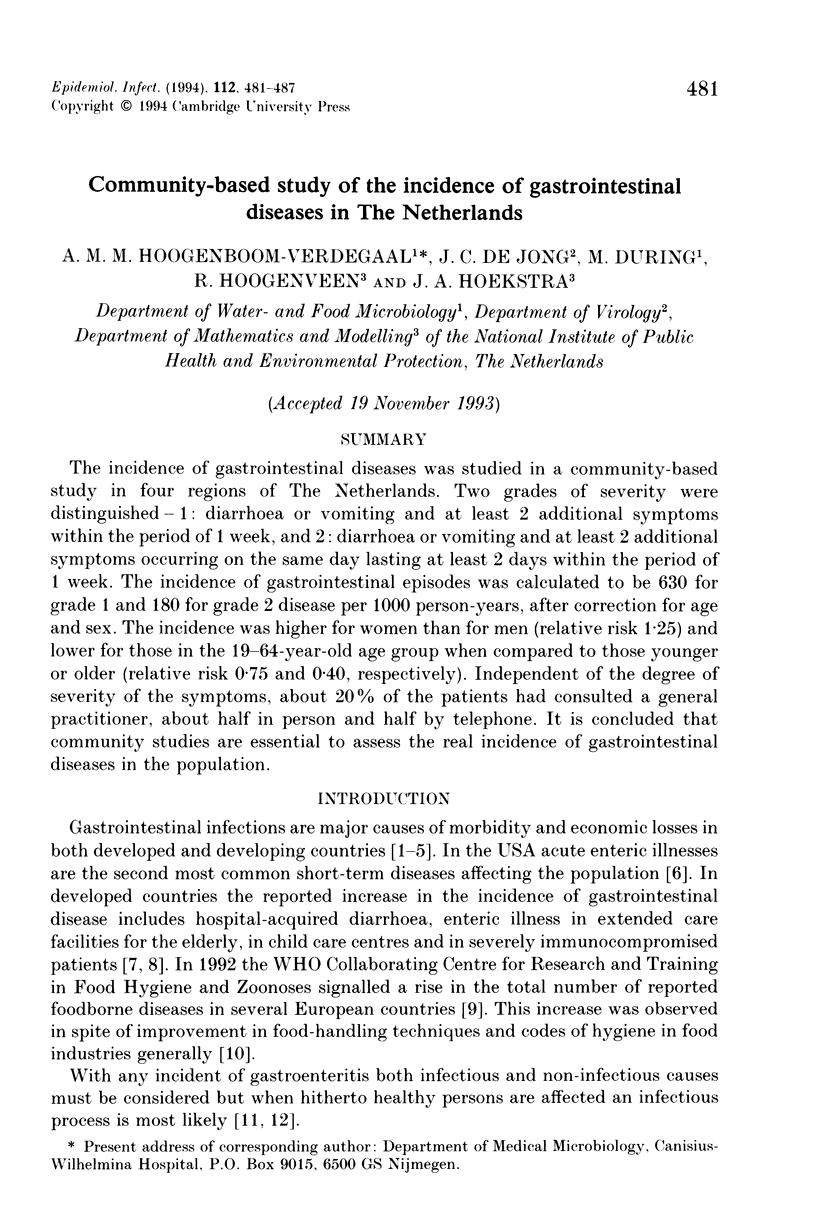
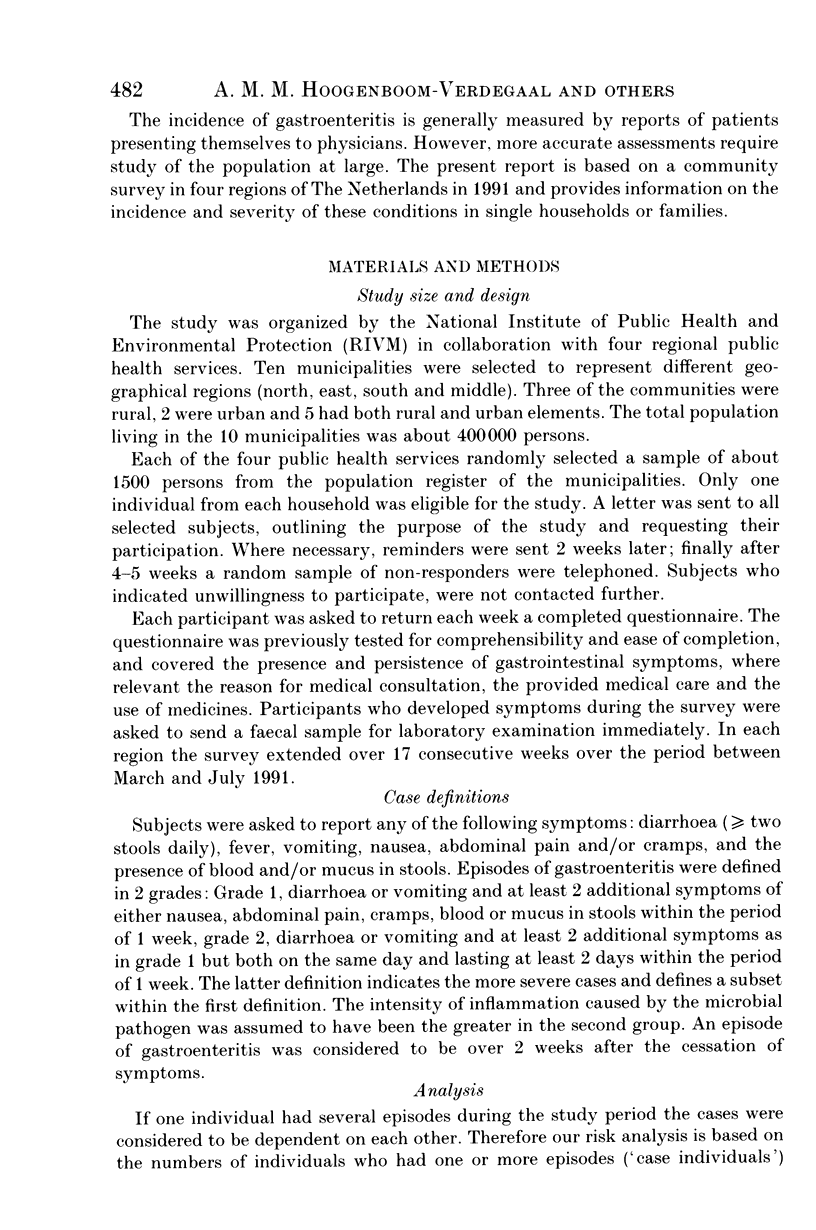
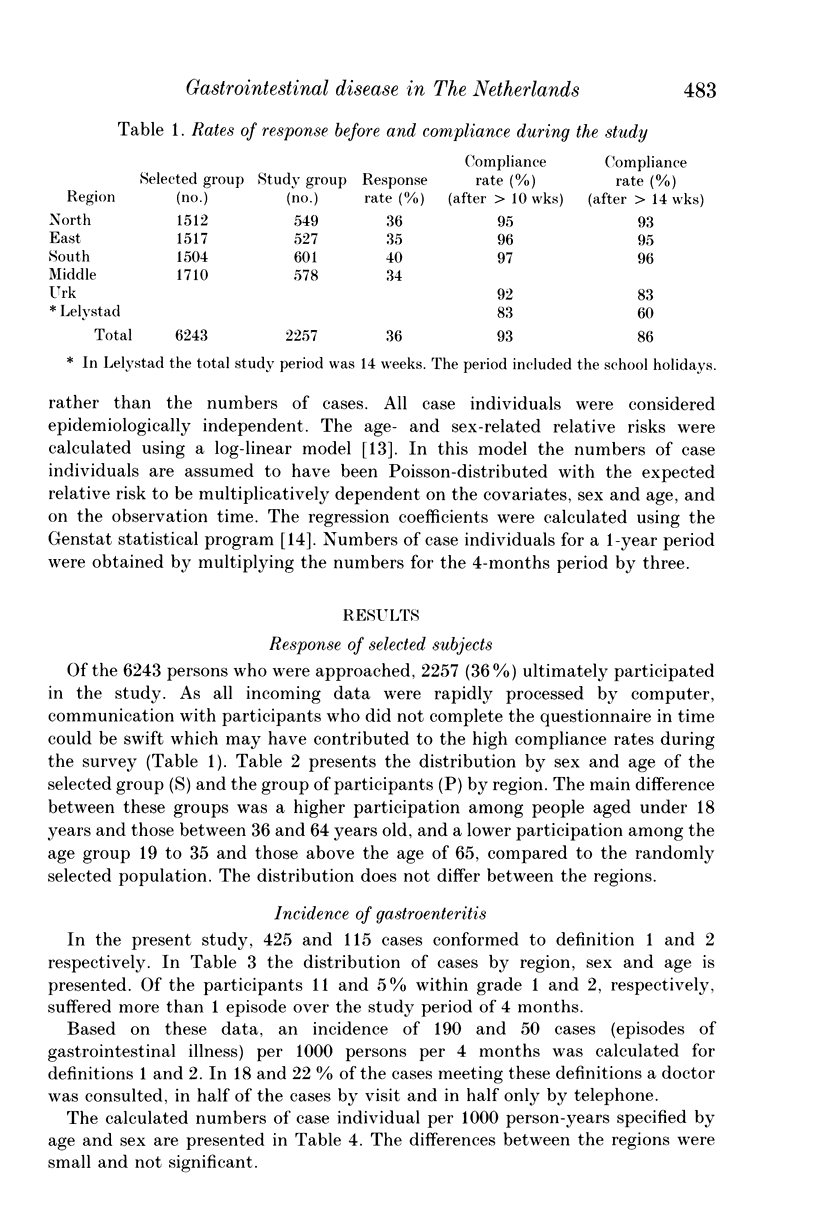
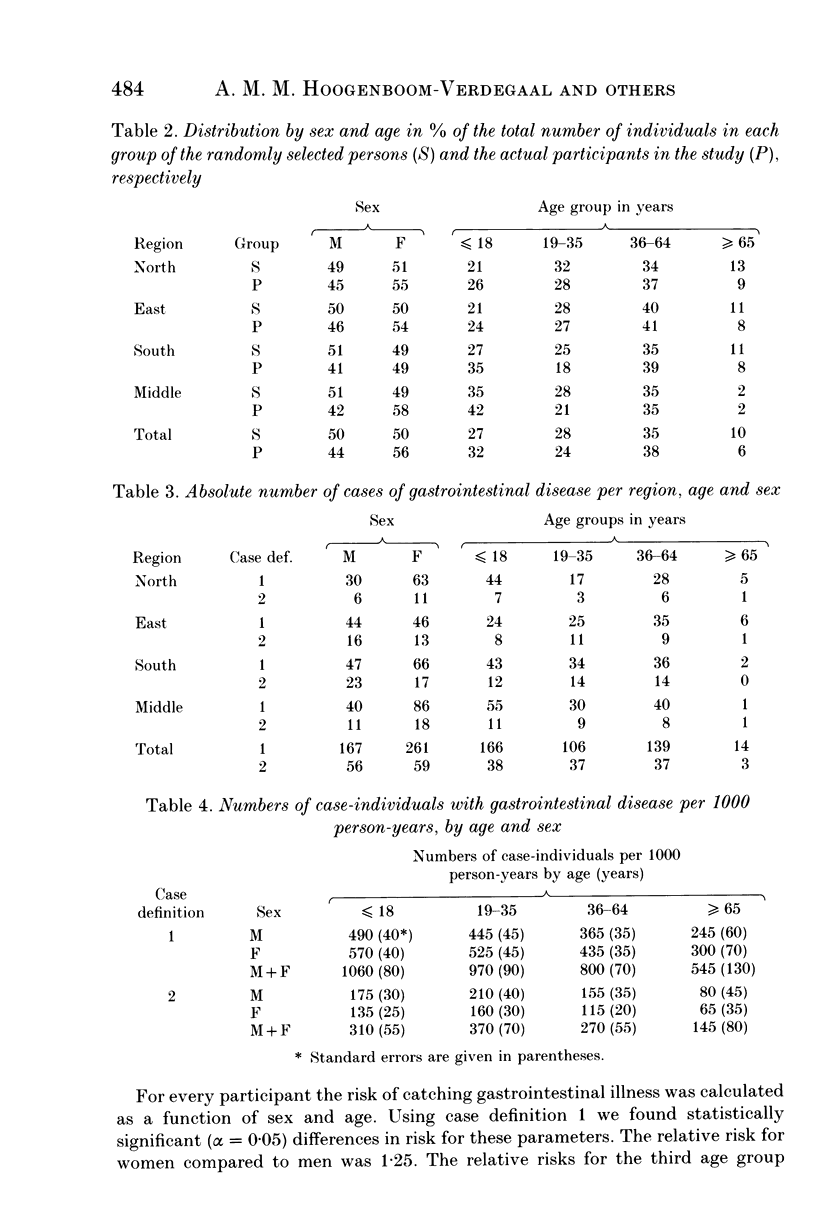
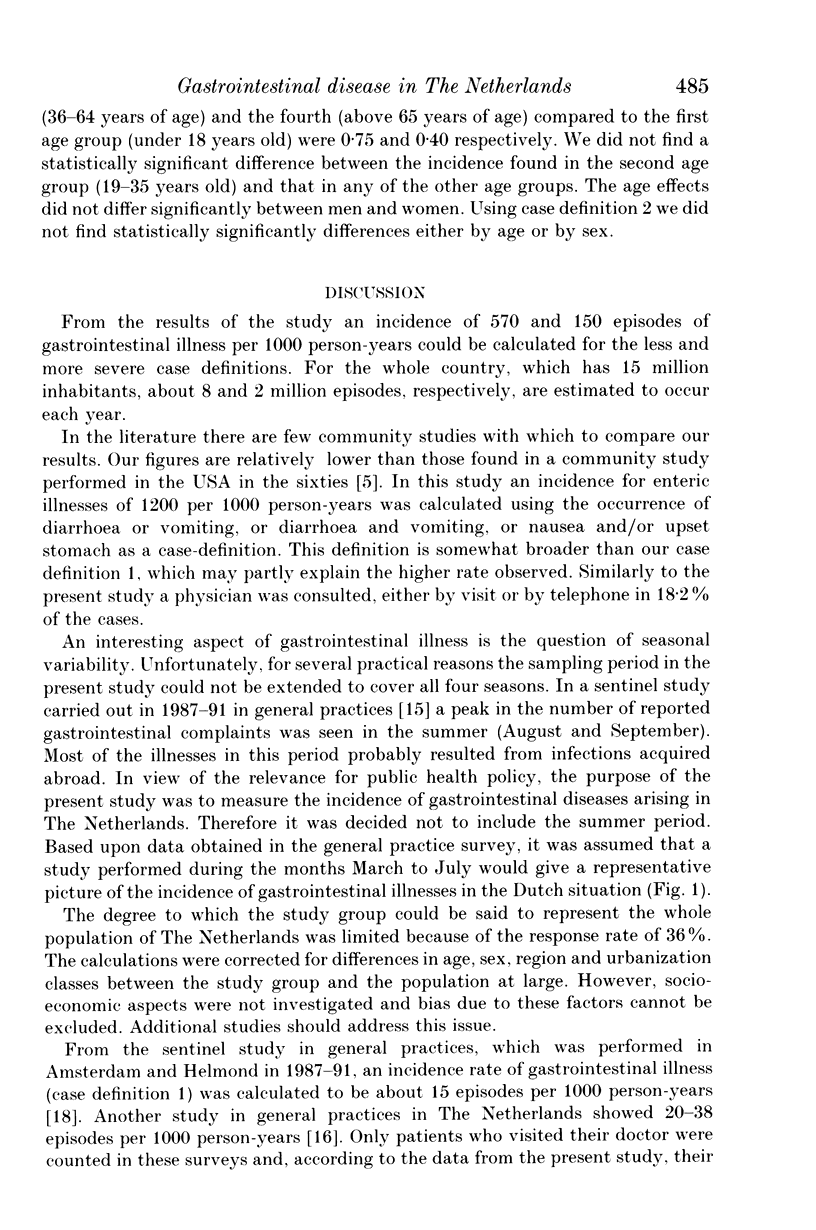
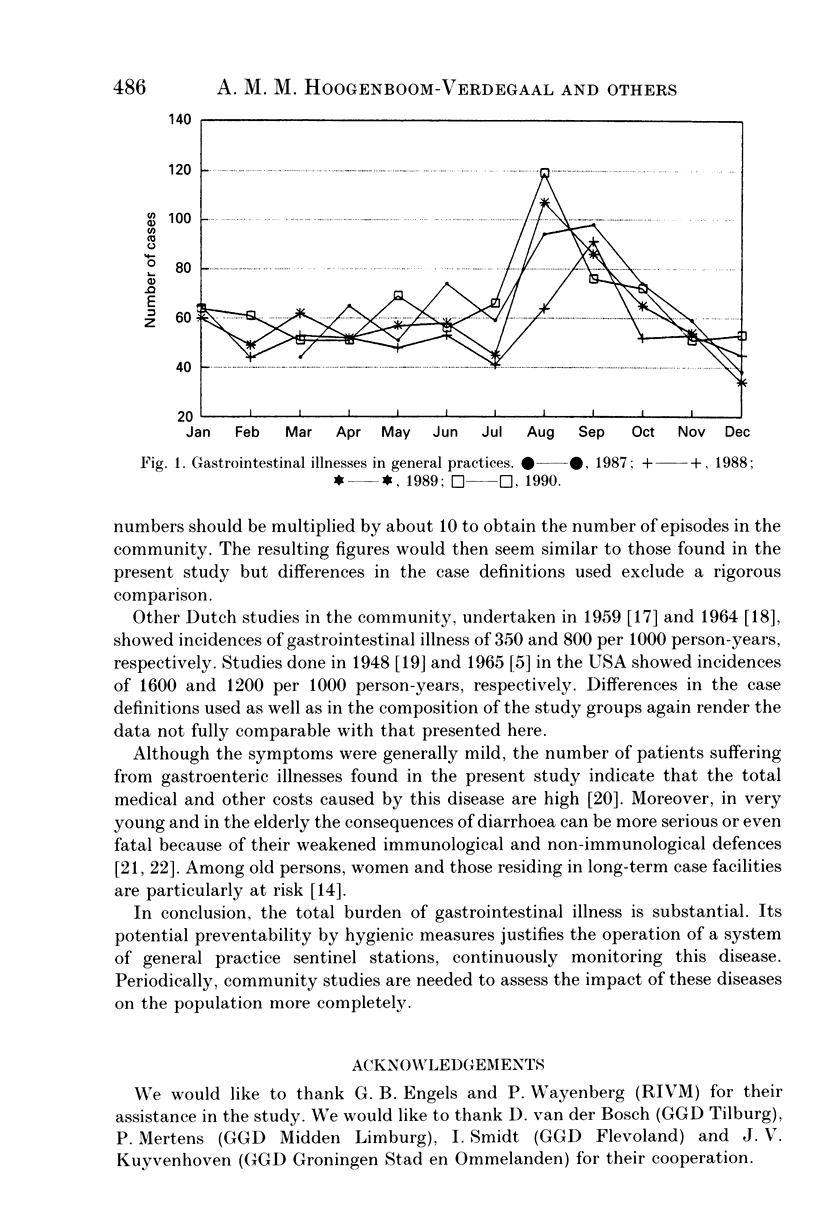
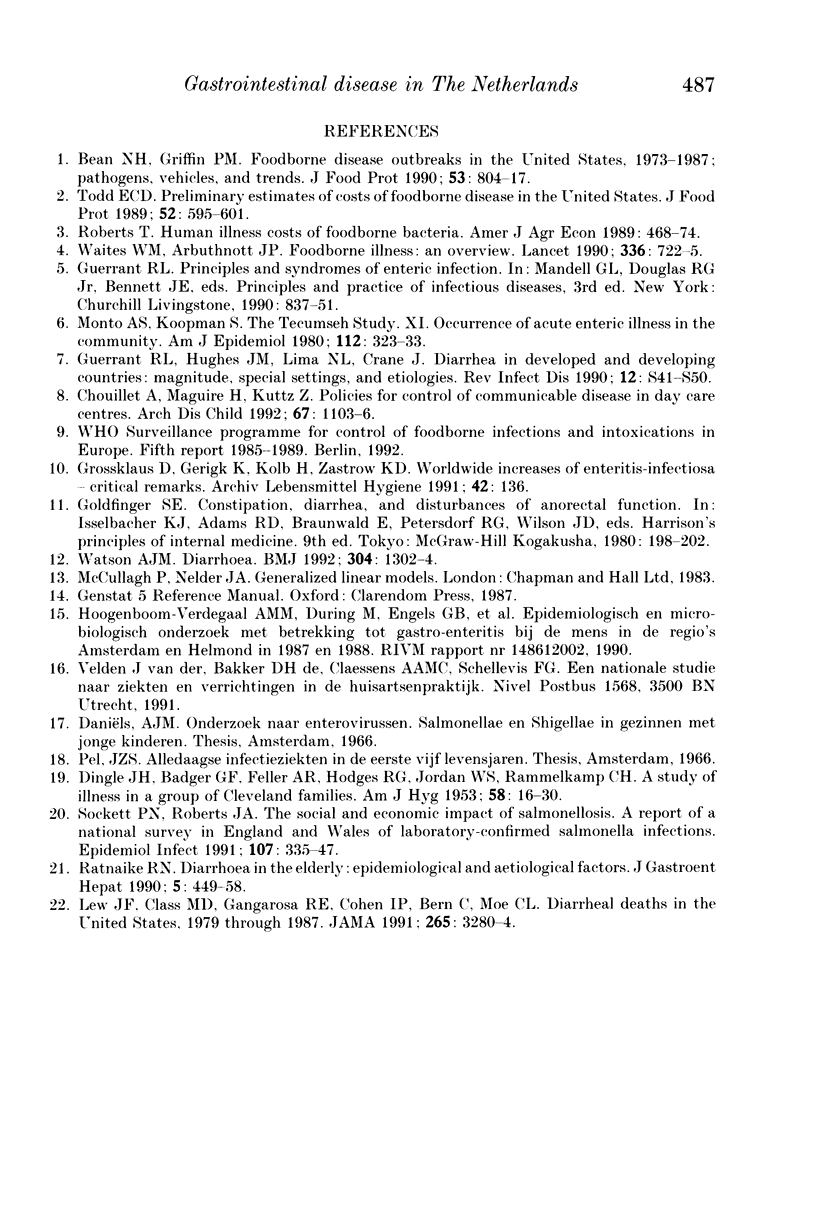
Selected References
These references are in PubMed. This may not be the complete list of references from this article.
- Chouillet A., Maguire H., Kurtz Z. Policies for control of communicable disease in day care centres. Arch Dis Child. 1992 Sep;67(9):1103–1106. doi: 10.1136/adc.67.9.1103. [DOI] [PMC free article] [PubMed] [Google Scholar]
- DINGLE J. H., BADGER G. F., FELLER A. E., HODGES R. G., JORDAN W. S., Jr, RAMMELKAMP C. H., Jr A study of illness in a group of Cleveland families. I. Plan of study and certain general observations. Am J Hyg. 1953 Jul;58(1):16–30. doi: 10.1093/oxfordjournals.aje.a119587. [DOI] [PubMed] [Google Scholar]
- Lew J. F., Glass R. I., Gangarosa R. E., Cohen I. P., Bern C., Moe C. L. Diarrheal deaths in the United States, 1979 through 1987. A special problem for the elderly. JAMA. 1991 Jun 26;265(24):3280–3284. [PubMed] [Google Scholar]
- Monto A. S., Koopman J. S. The Tecumseh Study. XI. Occurrence of acute enteric illness in the community. Am J Epidemiol. 1980 Sep;112(3):323–333. doi: 10.1093/oxfordjournals.aje.a112998. [DOI] [PubMed] [Google Scholar]
- Ratnaike R. N. Diarrhoea in the elderly: epidemiological and aetiological factors. J Gastroenterol Hepatol. 1990 Jul-Aug;5(4):449–458. doi: 10.1111/j.1440-1746.1990.tb01424.x. [DOI] [PubMed] [Google Scholar]
- Sockett P. N., Roberts J. A. The social and economic impact of salmonellosis. A report of a national survey in England and Wales of laboratory-confirmed Salmonella infections. Epidemiol Infect. 1991 Oct;107(2):335–347. doi: 10.1017/s0950268800048974. [DOI] [PMC free article] [PubMed] [Google Scholar]
- Waites W. M., Arbuthnott J. P. Foodborne illness: an overview. Lancet. 1990 Sep 22;336(8717):722–725. doi: 10.1016/0140-6736(90)92213-2. [DOI] [PubMed] [Google Scholar]


